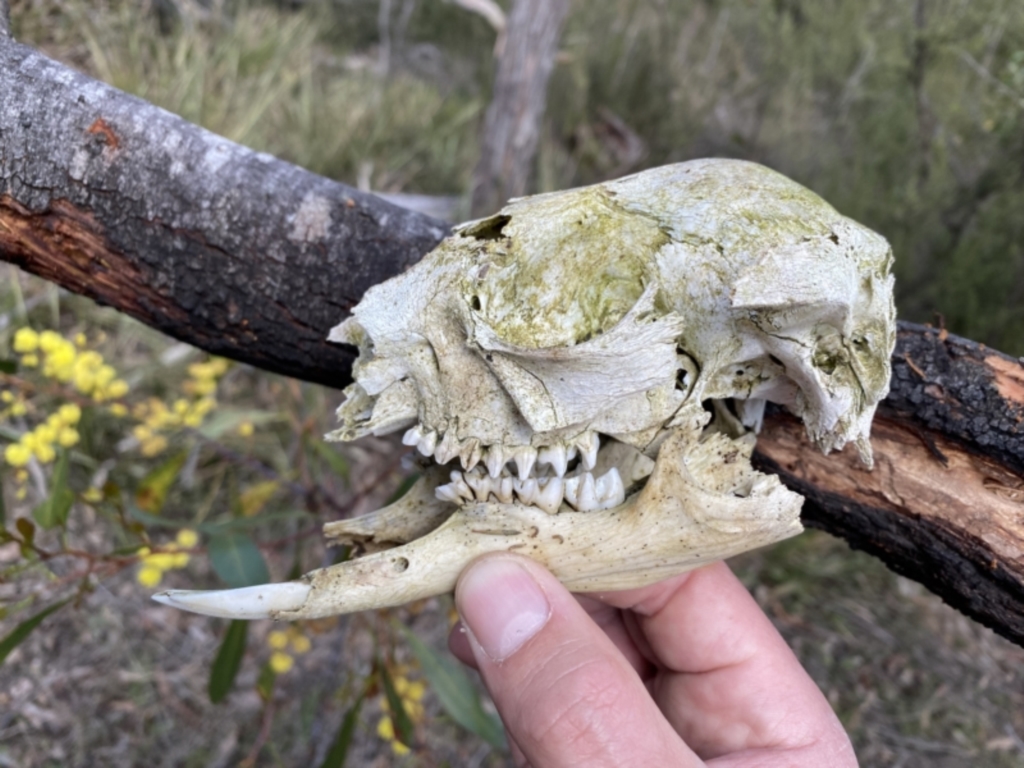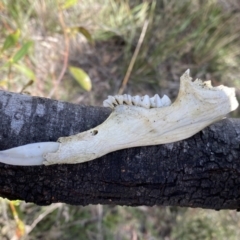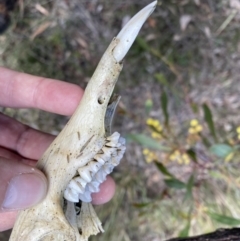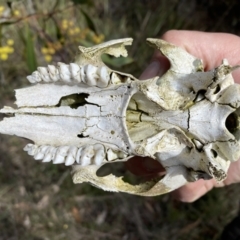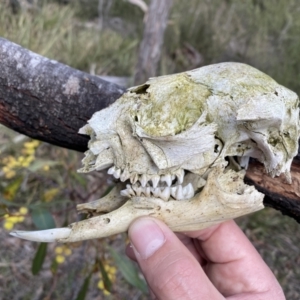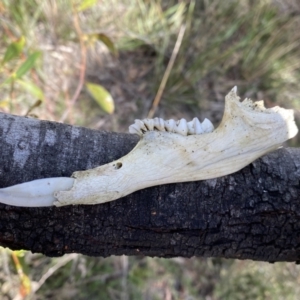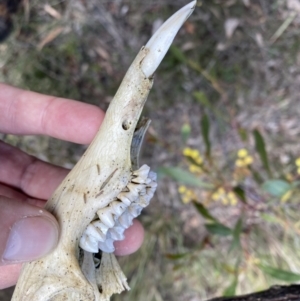2 Macropod at Jerrabomberra, NSW
Identification history
| Macropus sp. | 10 Sep 2022 | DonFletcher | ||
| Trichosurus vulpecula | 10 Sep 2022 | SteveBorkowskis | ||
| Unidentified | 10 Sep 2022 | SteveBorkowskis |
Identify this sighting
Please Login or Register to identify this sighting.
2 comments
DonFletcher
wrote:
10 Sep 2022
Hi Steve. Well done with the photos from almost every angle. It helps a lot with ID from skulls. Scale helps too, but there isa human hand in one, which helps too. This is certainly the skull of a macropod, likely an Eastern Grey Kangaroo.
If you're interested some key features are: (1) the diastema, i.e long gap between the front teeth (incisors) and the next ones (a premolar in this case) which is typical of grazing mammals whether they are marsupial or eutherian in origin. (2) The not yet erupted 4th molar at the back of the jaw. Only elephants and macropods have a system of molars erupting at the back and migrating forward to provide fresh grinding teeth. (3) At the front of the row of molars is a pre-molar. It is permanent in the Swamp Wallaby and Potoroids but deciduous in the other wallabies and kangaroos. In this case it has not quite gone, although it would if the animal had lived a bit longer. (4 ) a distinctive feature of marsupials is the 'shelf' protruding inward from the lower jaw - not visible in these pics, but a good feature to look for in future when you have a skull to ID.
If you're interested some key features are: (1) the diastema, i.e long gap between the front teeth (incisors) and the next ones (a premolar in this case) which is typical of grazing mammals whether they are marsupial or eutherian in origin. (2) The not yet erupted 4th molar at the back of the jaw. Only elephants and macropods have a system of molars erupting at the back and migrating forward to provide fresh grinding teeth. (3) At the front of the row of molars is a pre-molar. It is permanent in the Swamp Wallaby and Potoroids but deciduous in the other wallabies and kangaroos. In this case it has not quite gone, although it would if the animal had lived a bit longer. (4 ) a distinctive feature of marsupials is the 'shelf' protruding inward from the lower jaw - not visible in these pics, but a good feature to look for in future when you have a skull to ID.
Please Login or Register to comment.
Nearby sightings
Location information
- Coordinates 149.211136-35.370158
- Altitude 682.4m
- Maps Mount Jerrabomberra QPRC LGA Mount Jerrabomberra QP
- Places Jerrabomberra, NSW
Sighting information
- 1 Abundance
- 10 Sep 2022 01:48 PM Recorded on
- SteveBorkowskis Recorded by
Additional information
- Deceased Animal health
Species information
- Macropus sp. Scientific name
- Macropod Common name
- Not Sensitive
- Local native
- Non-Invasive
- 682.38m to 764.51m Recorded at altitude
- Machine learning
Record quality
- Images or audio
- More than one media file
- Confirmed by an expert moderator
- Nearby sighting(s) of same species
- GPS evidence of location
- Description
- Additional attributes
